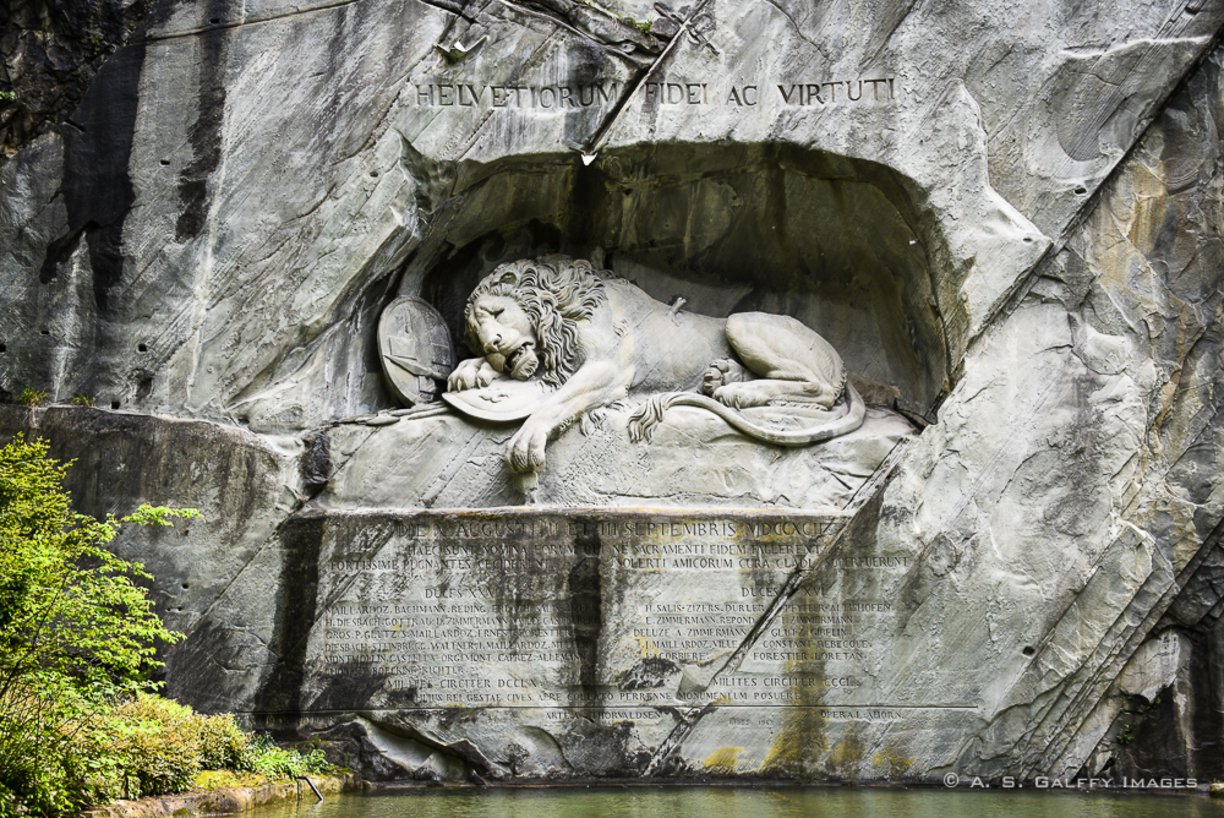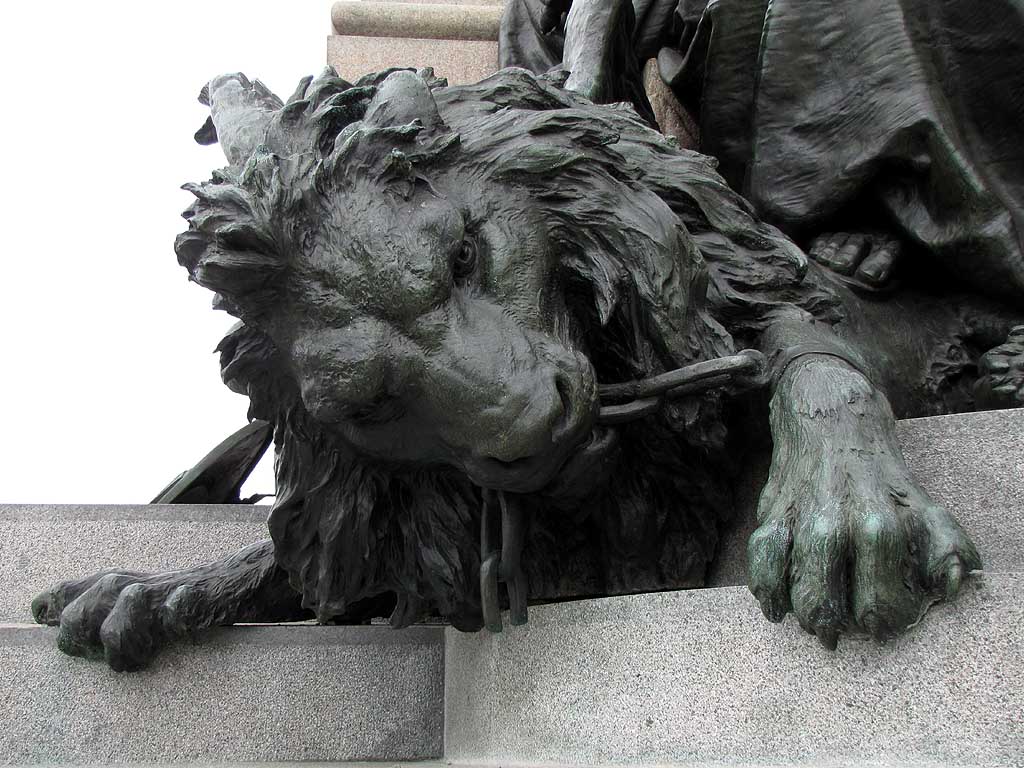You see them all over the world: Sculptures of lions, or lions otherwise depicted in art, are everywhere (In fact, there are more statues of lions in the world than actual lions). With their grace, strength, and beauty, it’s no wonder they’ve achieved a symbolic status in the western world.
The meaning of the lion can change with its context. But they’re always engaging as dynamic figures that make for excellent sculptures, and that’s why you should look for them when you travel.
5 fascinating lion statues you need to see in your travels:

Hercules and the Nemean Lion in Berlin, Germany
The story
Hercules holds a special place in Greek mythology and in western culture. According to the myths, Hercules completed 12 labors, or supposedly impossible tasks, in service to King Eurystheus, as penance for killing his wife and children.
The first labor was to kill the lion of Nemea, a huge, ferocious beast with impenetrable golden fur and claws that could cut armor. Finding that no weapon could kill the lion, Hercules instead strangled it to death. He then had to use its own claw to skin it, as no other weapon could do so.
The sculpture
“Hercules and the Nemean Lion” sits just outside the Neueus Museum on “Museum Island” in Berlin. Made from bronze by Max Klein in 1878, it depicts Hercules in the act of strangling the lion, their bodies completely intertwining. It’s a fascinating depiction of power vs. power.
If it looks confusing, that’s because it is: It’s unclear where Hercules begins and the lion ends, and you have to walk a full circle around the sculpture to get a clear picture.
See it
When you stop at Museum Island on our Berlin, Prague & Munich tour.
The Vittorio Emanuele II monument in Venice, Italy
The story
Venice’s patron saint is St. Mark the Evangelist, the author of the Gospel of Mark. Often represented by a winged lion, you can see images of Mark all around Venice, where his remains are said to be held.
Some of these images of Mark or the lion represent periods in Venice’s history. Here’s what you need to know for this particular statue: Venice was occupied by the Austrian Empire between 1815 and 1866, when Austria was defeated by the Prussians and Italy became a unified nation under its first king, Vittorio Emanuele II.
The sculpture
King Vittorio Emanuele II sits on horseback on top of a pedestal in this huge monument, created in bronze by Ettore Ferrari in 1887. On one side of the king sits a winged lion chewing chains, while on the other, the lion roars in victory.
The first lion symbolizes Austrian oppression, and the other symbolizes the victory of the Venetians. The victorious lion has a document labeled 1815–the year Italy was annexed by Austria–crumbled under his foot.
See it
On your stroll through Piazza del San Marco on our Italian Highlights tour.

The Art Institute Lions in Chicago, The United States
The story
The Art Institute of Chicago has been located on Michigan Avenue since it was moved there just after the 1893 World’s Columbian Exposition, held in Chicago. Today, the museum holds more than 300,000 works of art and is visited by over 1.5 million people a year.
The sculptures
Two bronze lions, sculpted by Edward Kemeys and unveiled in 1894, stand at the west entrance of the massive museum. Each lion is larger than real-life lions, and weighs more than two tons.
Looking at them, their purpose is clear: With one lion “on the prowl” and the other in “defiance,” they were put there to guard Chicago’s precious masterpieces. And they’ve definitely obtained a celebrity status in the second city: Lions are dressed up when a Chicago team is doing well, and they’re wreathed every year for the Christmas season.
See them
On your visit to the Art Institute on our Chicago tour.

The Lion Monument in Lucerne, Switzerland
The story
In 1792, during the French Revolution, King Louis XVI moved to the Tuileries Palace in Paris for safety, with about 900 Swiss Guards standing in his defense. However, the French National Guard stormed the castle, and over 600 members of the Swiss Guard were killed.
The sculpture
Officially called Löwendenkmal, the Lion Monument is one of Lucerne’s main attractions. Carved directly into a sandstone cliff in 1821, it commemorates the soldiers that were killed guarding the palace.
The sculpture depicts a lion dying from a spear wound, which you can see in its side. It’s surrounded by two shields, one with the coat-of-arms of Switzerland, and another with the mark of the French monarchy. “To the loyalty and bravery of the Swiss” is written above the 10-meter-long sculpture in Latin.
It’s certainly a somber sight. In fact, Mark Twain called it “the most mournful and moving piece of stone in the world.”
See it
When you pass through Lucerne on our Swiss Highlights tour.

Nelson’s Column in London, England
The story
Admiral Horatio Nelson (who, sidenote, was missing an arm and had no sight in one eye) died at the Battle of Trafalgar in 1805, a victory over the French during the Napoleonic Wars. In 1843, a 169-foot-tall Corinthian Column was finished to commemorate Nelson. It sits in the middle of London’s Trafalgar Square.
The sculptures
Four bronze Barbary lions guard Nelson’s Column; they were added over a decade after the rest of the column was finished, in 1867. Each lion is nearly identical, and is over 20 feet long.
However, they’re not entirely accurate: When Sir Edwin Landseer designed the sculpture, he used the corpse of a lion from the London Zoo as a model. As the corpse began to rot, he had to get creative, leaving the paws resembling those of a cat more than a lion.
See them
When you walk through Trafalgar Square on our London & Paris tour.


